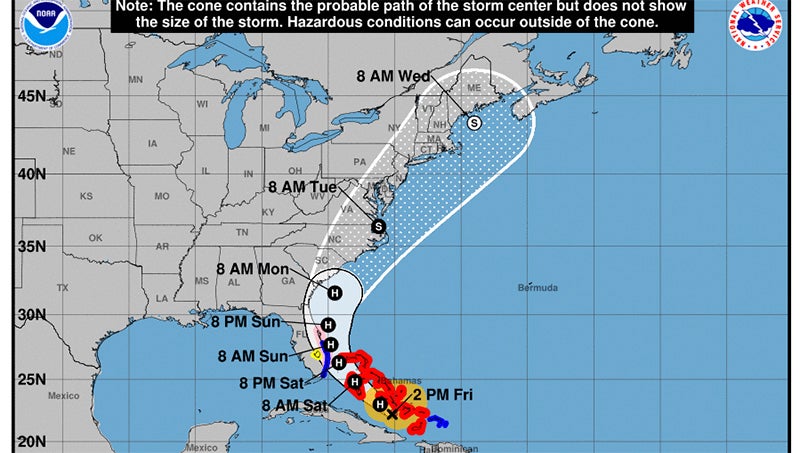Governor declares emergency as NC prepares for Hurricane Isaias
Published 5:10 pm Friday, July 31, 2020

- (National Hurricane Center)
|
Getting your Trinity Audio player ready...
|
From the Office of Gov. Roy Cooper
North Carolina is preparing for the arrival of Hurricane Isaias with plans including safeguards for COVID-19. Gov. Roy Cooper and State Emergency Management leaders updated the public today, urging them to track the storm and prepare for wind and rain.
In preparation for the storm, Governor Cooper declared a state of emergency to issue transportation waivers to allow trucks and supplies to move to where help is needed. The state Emergency Operations Center — already activated for COVID-19 — has activated for the storm as well, and state and local response teams are at the ready.
“Although the track and arrival of the hurricane could still change, now is the time for North Carolinians to prepare,” Cooper said. “Hurricane preparations will be different given the COVID-19 pandemic, and families need to keep that in mind as they get ready.”
The current forecast is for Hurricane Isaias to increase in intensity over the next 24 hours. The storm shifted west Friday afternoon, and its speed and path indicate it could reach North Carolina as early as Monday, making its greatest impact Monday night and Tuesday. However, the state is already seeing signs of the storm with high risk of dangerous rip currents along the coast, and the danger of tropical storm force winds is increasing.
North Carolina Emergency Management, NC National Guard and the NC Department of Transportation are coordinating on where to stage Unmanned Aircraft Systems drone teams in the field based on the storm’s track to provide post-event damage assessments.
The NCNG also has 75 guardsman and high-water vehicles on standby should they be activated to respond. NCDOT has more than 1,800 personnel, 1,550 pieces of equipment and more than 1,000 chainsaws ready to respond if needed. They have also suspended passenger ferries today, began voluntary evacuations of Ocracoke, waived tolls on evacuation routes and are preparing facilities and mooring plans for vessels for storm conditions.
Some local governments have already issued evacuation orders. While the state is still combating the COVID-19 pandemic, the state is urging people to make every effort to stay with family and friends, or even a hotel, as the first option. The state will coordinate shelters for those who need to evacuate and this will be an option for those who need it.
People should follow local evacuation orders should they be issued. Evacuees may find that sheltering looks different this year. Some changes may include:
- Residents and visitors seeking shelter will be screened for COVID-19 symptoms. If an individual has COVID symptoms, they will be redirected to a non-congregate sheltering option where they can more easily isolate.
- Social distancing means fewer residents in shelters, and if needed, more facilities and volunteers to shelter the same amount of people as in previous seasons.
- Maximizing space requirements may mean not all shelters will offer cots. Be prepared to provide your own bedding and care items.
- Meals will be served in sealed containers and shelters will move away from serving lines or buffets to minimize the potential exposure of everyone in the shelter.
For more information storm preparation visit www.readync.org/.
North Carolina has recently introduced the Know Your Zone program in the 20 North Carolina coastal counties. For more information or to learn your zone, visit knowyourzone.nc.gov.
Read the Executive Order declaring a State of Emergency for Hurricane Isaias.





